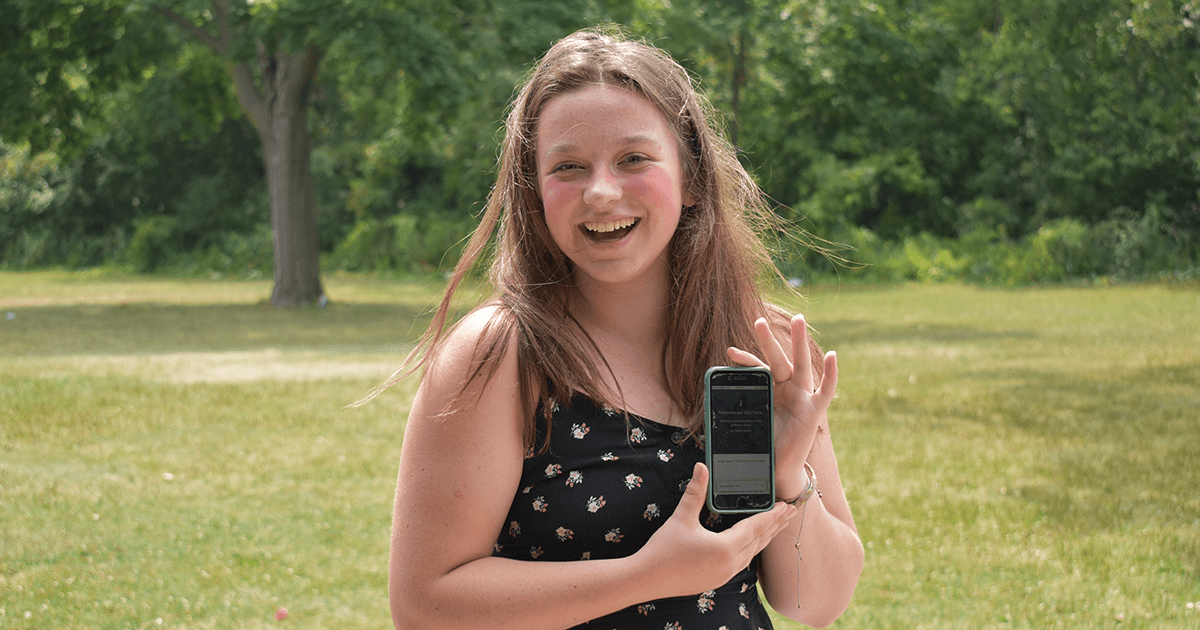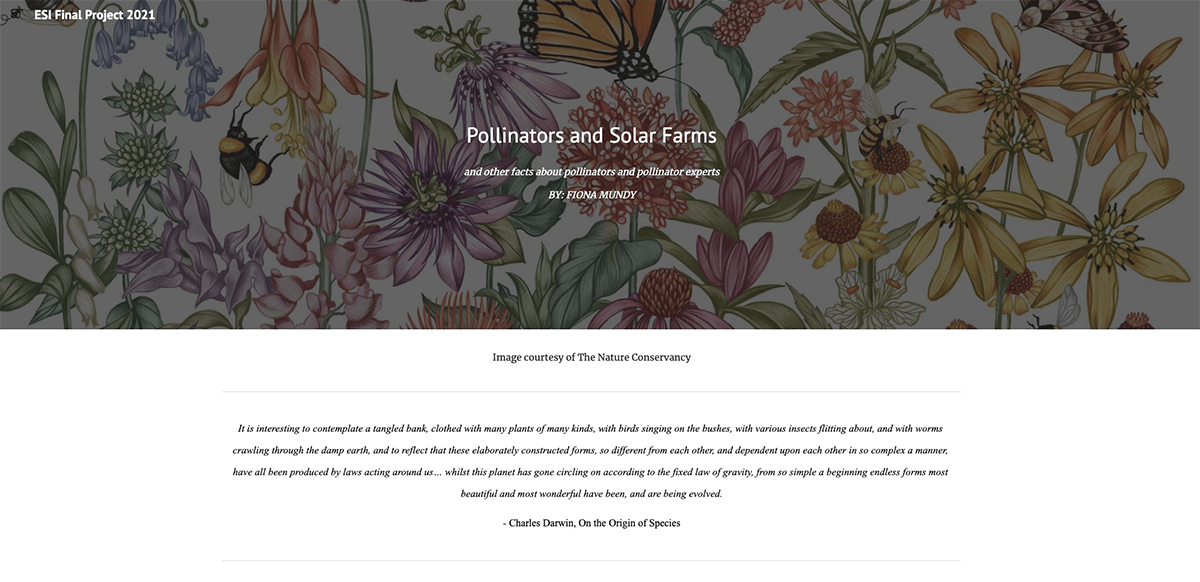2021 ESI guest post: Pollinator potential
This is a guest blog post from Fiona Mundy, an Environmental Stewardship Institute fellow this summer. Fiona explored the potential for pollinator habitat to grow alongside solar farms, as well as her own potential future in the field. (Note: Opinions expressed in ESI projects are those of the program participant and do not necessarily represent those of FMR.)
* * * * *
For my final project, I used Google Sites to create a website where I explained the importance of pollinators.
I also explained my research: interviews with pollinator experts from Minnesota and around the country.
Why I chose this project
I was inspired to do my project on pollinators because I have always had a fascination with bees and other pollinators. I first asked my mom if I could set up a bee hotel in our front yard for bees to rest and hibernate during the winter, but unfortunately, she refused.
I asked my mentor, Lauren Agnew, a pollinator researcher at the University of Minnesota, about people that I could contact, and I talked to many of her colleagues and other contacts. I also did two in-depth interviews with Adam Beal, a contractor and developer of solar panel farms, and Dr. Clint Otto, a researcher and data analyst specializing in pollinator ecology.
What I hope you take away
One out of every three bites of food that we eat is provided to us through the work of pollinators. They make our world beautiful, vibrant and diverse, but they are rapidly declining. The lack of pollinator-friendly plants is devastating to ecosystems around the planet.
Understanding pollinator ecology and their current situation is crucial to stop pollinator health from declining even more, so I encourage you to read more about this topic. (Here's an article from FMR for starters.)
* * * * *
What's the Environmental Stewardship Institute?
FMR's Environmental Stewardship Institute (ESI) fosters a diverse next generation of environmental leaders through an immersive program of local river issues and professional development that supports an interdisciplinary exploration of the environmental field.
FMR created ESI in 2019 to address the gap between environmental education and a career path in the environmental field. While many high schools offer green teams or eco clubs, many young people don't have the opportunity to explore what a career in the environmental field can look like. As an environmental organization, FMR wants to use our resources to help address that gap, in turn growing a stronger, more equitable future for the environmental movement.
ESI provides a paid job experience and foundational learning to a group of students, our ESI fellows, curious about environmental career paths. Upon completing the program, fellows are more prepared for continued schooling in environmental subjects and have work experience to lean on for future job opportunities across a variety of disciplines in the environmental field.

